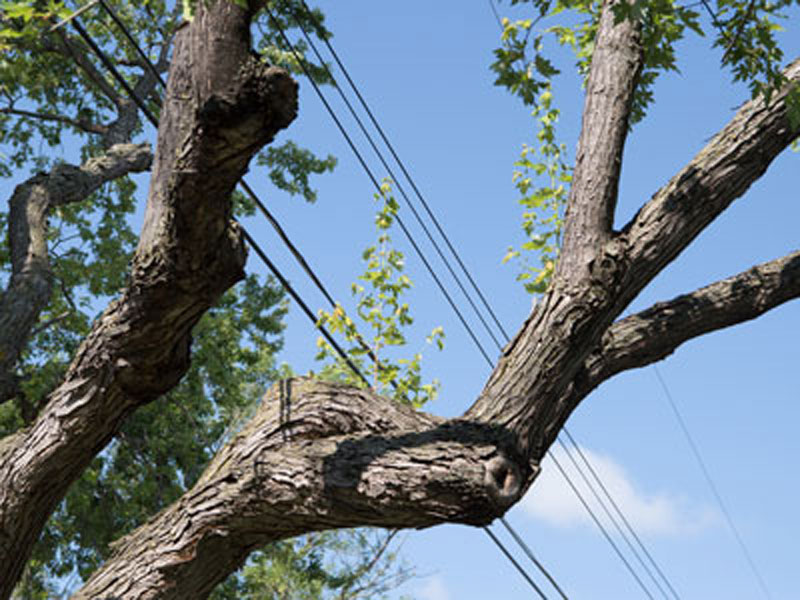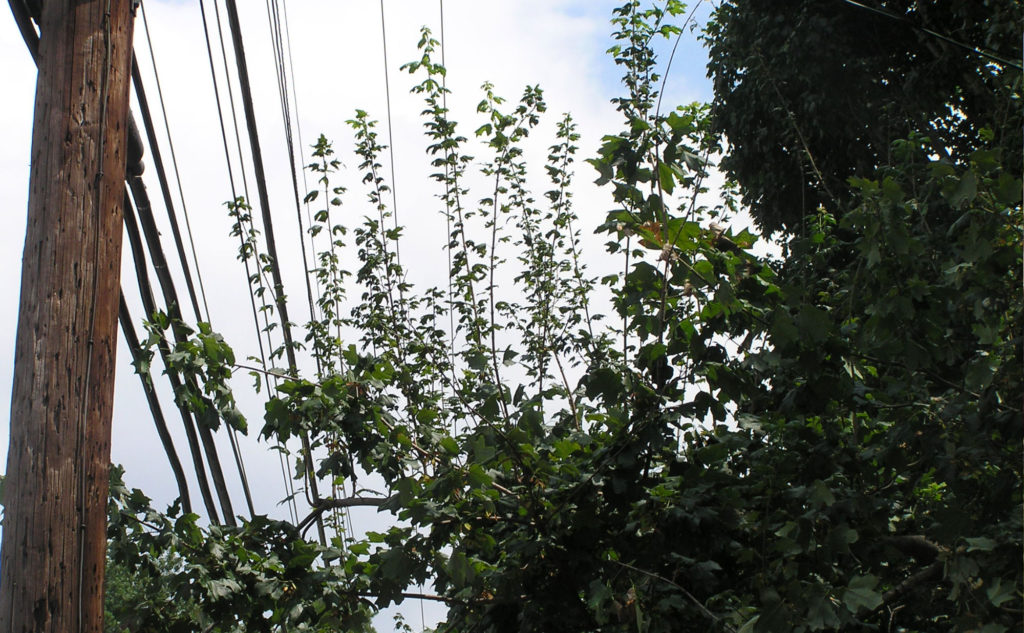A Tree’s Life Under a Powerline
Born to Interfere
Since the advent of the utility pole, trees and power lines have been in conflict. Safe and reliable power delivery requires a certain amount of clearance between trees and power lines to ensure an uninterrupted flow of electricity. All vegetation, and trees, in particular, tend to grow up in these clearings under and around the lines. Trees near powerlines can cause damage and at times, dangerous interference.

Minimizing this interference by continually cutting back the branches has been the standard operation for nearly 100 years. This has significant costs associated with it for the utility companies, and ultimately, their customers. Above and beyond the economic impacts, there are substantial costs to the trees themselves in these situations.
Repeated Tree Wounding from Pruning
While pruning is necessary for the proper growth and development of many urban trees, there is a connection between repeated pruning wounds and a tree’s ability to stave off decay. Every cut on a tree is an opportunity for decay organisms or insects to enter and negatively affect a tree’s health and safety risk.
A 20-year-old tree has developed 20 years’ worth of leaf surface area. This leaf surface is needed to manufacture sufficient food to feed and support a life’s worth of branches, trunks, and roots. Removing much of the tree canopy upsets the crown-to-root ratio and seriously affects the tree’s food supply. Drastic pruning not only cuts off a significant portion of the tree’s food-making potential, it also severely depletes the tree’s stored reserves. It is an open invitation for the tree’s slow starvation.

Rapid, Unstable New Growth after Pruning
Line clearance pruning often stimulates the regrowth of dense, upright branches just below the pruning cut. These new shoots (referred to as suckers or water sprouts) are not as structurally sound as the originally occurring branches. These water sprouts often consist of succulent growth that is more susceptible to diseases and herbivorous insects such as aphids and caterpillars.
Since water sprout regrowth is generally rapid and vigorous, a tree under a utility line often will grow back to its original height faster and denser than a tree that has been appropriately pruned or thinned. Deteriorating branch stubs and weak water sprout growth make these trees highly vulnerable to wind and ice damage. Line clearance pruning, at best, is only a temporary solution to keeping a tree healthy and free from interference.
Trees and power lines may never totally coexist peacefully, but if we can make life longer and healthier for the trees while making one of the world’s most dangerous jobs just a bit safer. Read more about how the Growth Solutions Method greatly benefits trees near powerlines.
